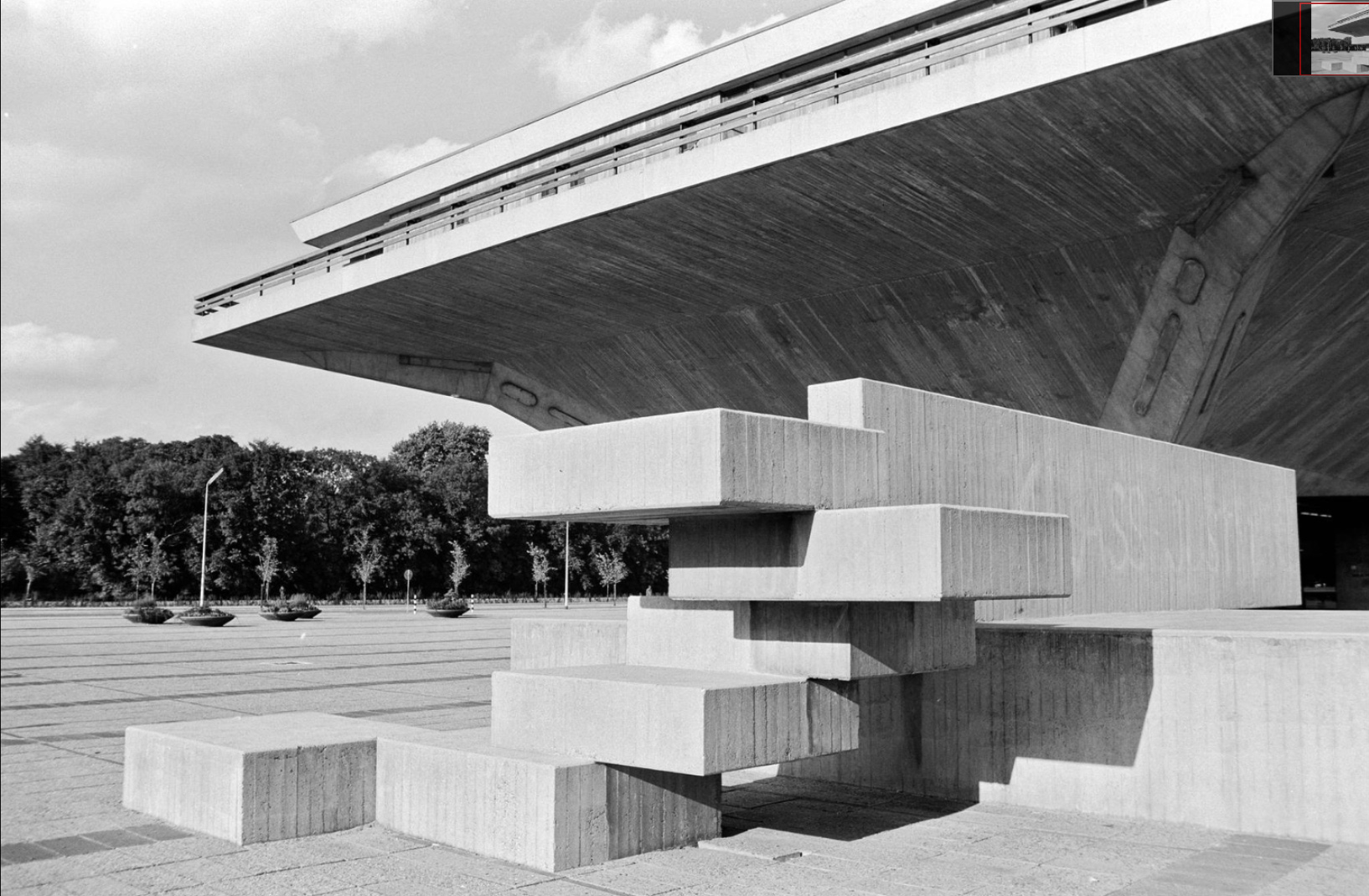A fifty year old concrete Salami
Ever heard of the ‘salami-technique’? No, it isn’t a trick for making sandwiches… When a manager wants to implement a big change for which he or she expects strong opposition, the change is cut into little pieces. Those little changes do not seem to matter much, but at the end of the ride, the big shift is made without you even noticing.
Fun fact #1: the Salami sculpture on our campus has absolutely nothing to do with that technique!
“What Salami sculpture? We have a Salami sculpture at our campus? Why am I suddenly in the mood for a salami sandwich?”: most of you will be thinking right now. Settle down. Yes, we have a salami sculpture! Remember that seemingly random pile of concrete blocks in front of the Aula? That is a real piece of art right there. You probably even passed by today without even thinking about it.
The “Salami”, see the picture above, was designed in 1966, when the Aula was built. In that period, it was normal to spend 1% of the project costs on new art to improve the working surroundings of Dutch citizens. That honour came to our Salami. According to Carel Visser, the artist who studied in Delft himself, it was the ordinary salami sausage which inspired him to design the sculpture. “A salami consists of a long basic element of which I chop little pieces, as it were. I came up with the title in retrospect: it fits the sculpture like a glove.” The chopped pieces are a shaky balance.
According to Visser, the Salami was a perfect fit with the Aula, because of the size and the weight. “The Aula gave me the perception of biting, a monster with a upper and lower jaw. I felt like sticking a sword in it. This was a sort of defence.” In 1971, Carel Visser received the State Award for Fine Arts and Architecture. Nowadays, the Salami is a nice place to hang out when it’s sunny on our campus. So, like twice a year.
Fun fact #2: The rule of spending a percentage of building costs on art is actually still in effect. The Dutch Central Government Real Estate Agency, which manages all government buildings, is the largest patron of visual arts in The Netherlands. Whenever the construction or remodeling of a government building exceeds a budget of €1.000.000, a percentage of that budget is allocated to accommodate visual art at or near the site.




Comments are closed.